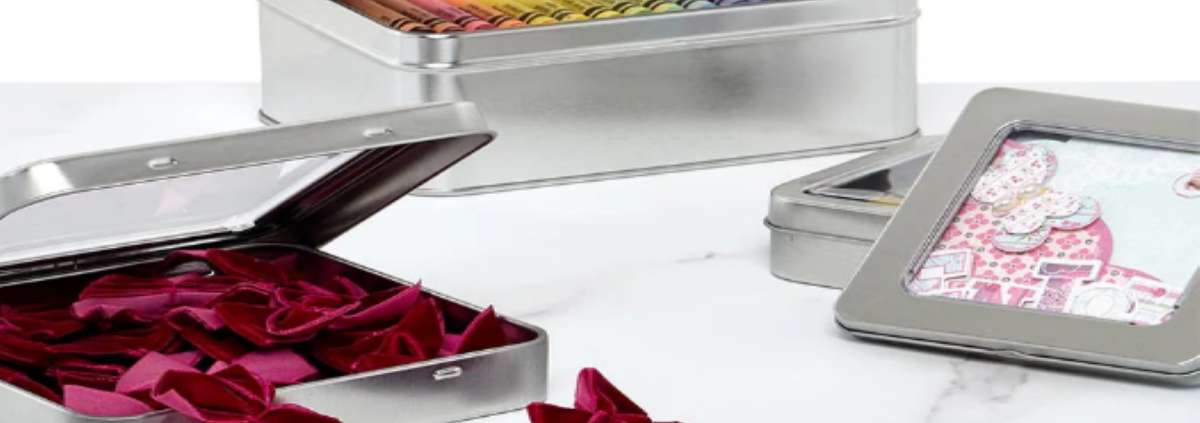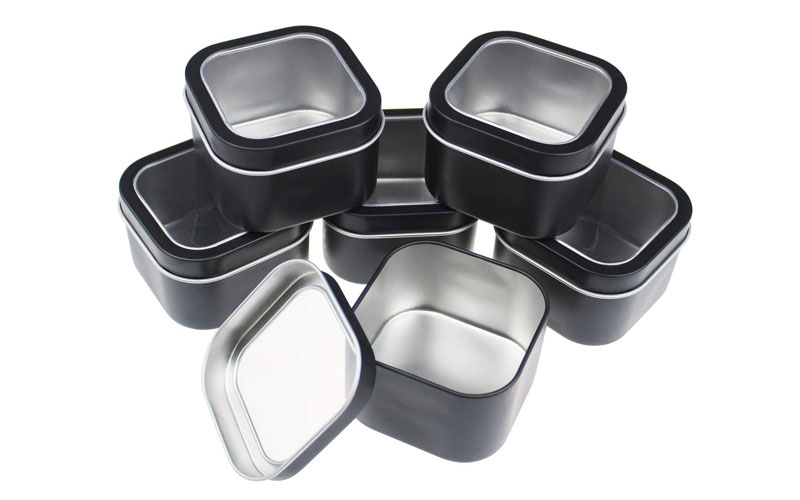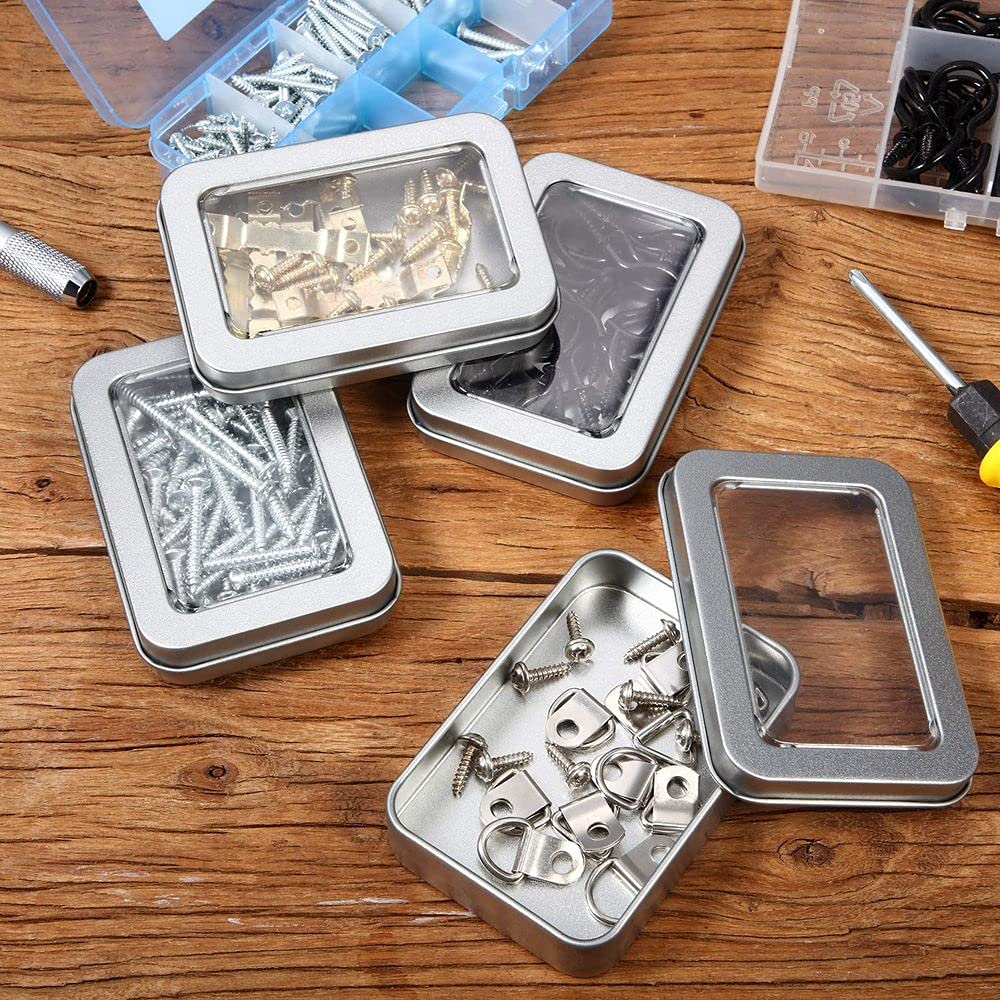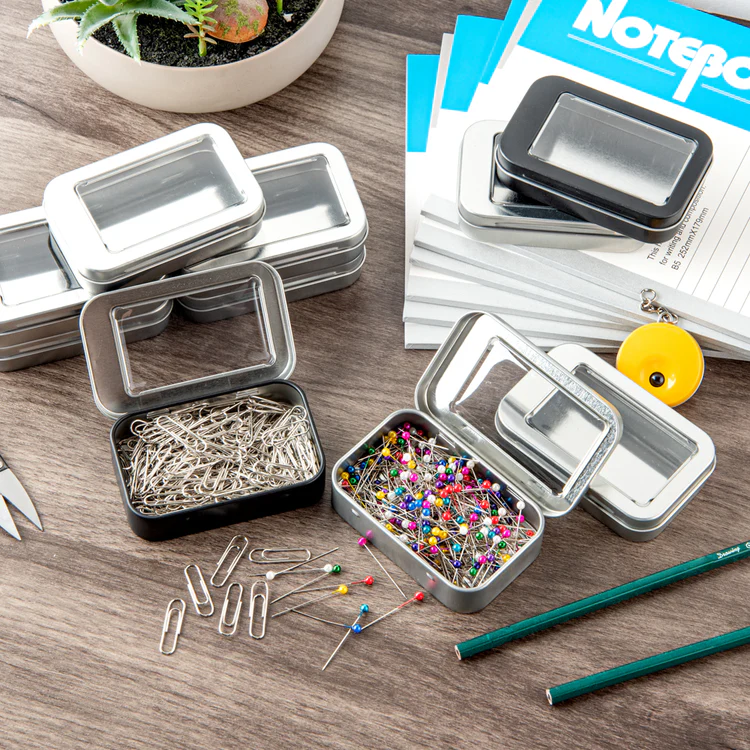Square Metal Tins with Window: Balancing Product Visibility and Barrier Performance
According to a report by the Food Marketing Institute (FMI), 68% of American consumers choose visible products over opaque ones because visibility builds trust (allowing them to check freshness, texture, or color before purchase). Therefore, for tin can manufacturers, square metal tins with windows are the solution, allowing customers to see the product without compromising its protection. These tins combine barrier properties (moisture, oxygen, and tamper resistance) with the product display capabilities of a clear window.
Why Square Metal Tins with Windows Solve Packaging’s Biggest Pain Point
From food to cosmetics to crafts, brands across various industries often face a dilemma when it comes to packaging: prioritize visibility or protection. Square metal tins with windows address this dilemma by solving three core pain points. First, they build consumer trust: The clear window allows buyers to inspect the product without opening the can. Second, they retain metal’s unparalleled barrier properties: Unlike plastic containers, which allow oxygen or moisture to penetrate, square metal cans block 99% of oxygen and 95% of moisture, keeping products fresh for months. Third, their square shape maximizes storage efficiency—both for brands and consumers. Tsing, a bulk supplier of square metal tins, offers 4-ounce, 8-ounce, and 16-ounce windowed square metal tins to meet a wide range of needs, from small batches of gourmet nuts to large craft kits.
How can a square metal tin’s window design enhance product visibility?
Not all square metal tins with windows are created equal—the window’s location, material, and size directly impact the product’s presentation. First, consider placement. Tsing, a bulk supplier of square metal cans, typically offers three options: top window, front window, or full-panel window. For example, a chocolate brand might choose a top window to showcase the glossy coating on its truffles, while a stationery brand might use a front window to highlight a custom sticker inside.
Next, consider the material of the window. PET is the most popular choice because it’s shatterproof, scratch-resistant, and food-safe, which are crucial for edible products. PVC is also a more cost-effective option for non-food products, such as crafts. Finally, window size is also essential. Generally, a 2×2-inch window is suitable for small items, such as mints, while a 4×4-inch window is more suitable for larger items, like cookies. We recommend that customers test window sizes with their products to ensure the window showcases the product’s best features while not compromising the structural integrity of the square metal tin.
Product Safety Even with a Window
Of course, many users ask whether adding a window will affect the barrier properties of a square metal tin. Our answer is no—provided it’s designed and tested correctly. The reason is that Tsing’s square metal cans are made from tinplate, a material that has been widely used in packaging for decades for its ability to create an airtight, moisture-proof seal. Furthermore, when adding a window, the bulk square metal tin supplier uses a two-step process to maintain the seal: First, a precise opening is cut into the can body or lid. They then bond the window material to the can using a food-grade adhesive and a pressure seal. This bond is tested to ensure it provides a barrier to moisture and oxygen.
We tested square metal tins with windows by exposing them to 90% humidity for 30 days; the results showed no moisture leakage, and the products inside, such as dried fruit, remained fresh. Furthermore, the metal walls of the square metal cans still provide physical protection. Unlike plastic containers that break when dropped, square metal tins with windows can withstand minor impacts without damaging the product inside.
Key Considerations When Purchasing Square Metal Tins with Windows
First, if your product is edible, prioritize food safety by ensuring your supplier uses food-grade tinplate and food-safe window adhesive. A good supplier will provide third-party certification to prove this. Second, discuss customization needs: Do you require branding on the tins? Can the supplier adjust the size or position of the window?
Third, ask about the minimum order quantity (MOQ): Bulk square metal can suppliers typically have lower MOQs for standard sizes, such as 3,000 for a 4-ounce can, but higher MOQs for custom designs, such as 5,000. Fourth, request samples to test the can’s durability and window clarity. Finally, inquire about delivery times: Standard square metal tins with windows typically ship within 2-3 weeks, while custom orders may take 4-6 weeks. Planning ensures you don’t run out of packaging during peak production periods.
Industry-Specific Uses
Square metal tins with windows excel across various industries because they can adapt to different product needs. First, in the food industry, gourmet snack brands typically use 6-ounce to 12-ounce cans for nuts, cookies, or chocolates, allowing customers to experience the freshness and quality of their products firsthand. For example, a caramel brand used square cans with a window on the top to showcase their golden caramel products, which boosted in-store sales. Next, cosmetics and personal care products. Soap and candle brands are using 8-oz to 16-oz jars with front windows to showcase the product’s color and texture.
Third, crafts and hobbies. Some suppliers of beads, buttons, or gadgets use 4-oz to 8-oz jars with windows, allowing crafters to check the quantity and style of the items inside. Furthermore, one jewelry brand even uses miniature 2-oz square metal jars with windows to package earrings, making them easy to display on store shelves. In each case, the jar’s window promotes sales, while the metal shell protects the product.
Balancing Visibility and Barrier Performance
The windowed square metal tin solves a simple yet powerful problem: allowing customers to see their purchase at a glance while ensuring its safety, freshness, and integrity. For brands, this means higher sales, greater customer trust, and reduced waste. For consumers, it means confidence in their purchase, knowing exactly what’s inside and trusting the square metal jar to maintain optimal condition.








 Facebook
Facebook Twitter
Twitter Linkedin
Linkedin